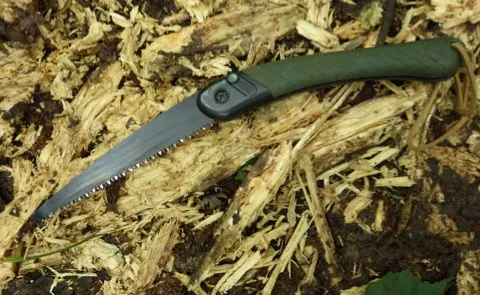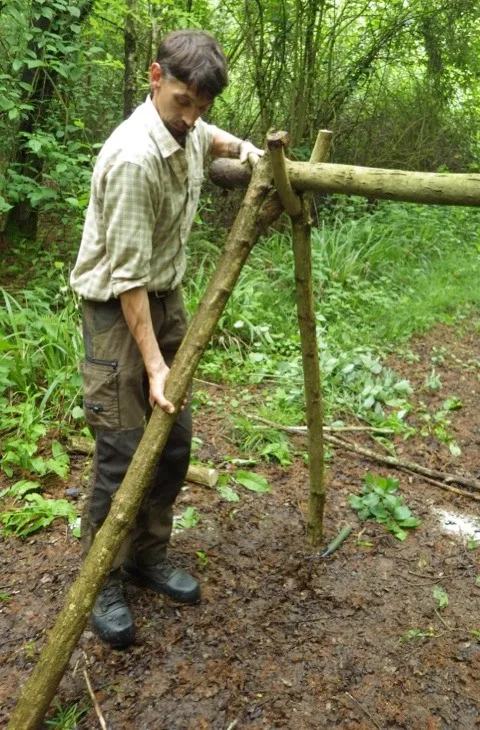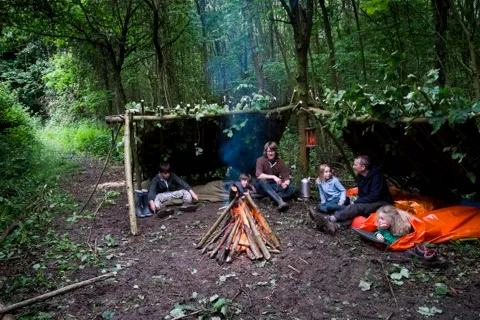Before you start:
• You’ll need a pruning saw (pictured below) or bow saw, and twine or rope.
• Always get permission to use woodland and to cut off branches or cut down trees.
• Forage for fallen branches – cutting living trees should be a last resort.
• Children can make shelters like these, but you must have adults around to help.
• This is a job for two or more people and will take around three hours.
• Choose a place with level, reasonably dry ground.
• Choose a small to medium sized tree to support one end of the shelter.

1
• Cut three Y-shaped branches, around 10cm thick and 2.7m (7ft) long below the crux of the fork. The fork itself should be around 30cm long.
• Cut one straight branch, roughly 8cm-10cm thick, to act as the top horizontal support for your lean-to. How wide depends on the width of your shelter. For three people, this top pole should be around 2.7m long.
• Take one of your Y-shaped branches and roll one end of the top pole into it.

2
• Supporting the pole at both ends, lean against the tree around 1.5m up. The Y-shaped branch should fit against the trunk, jamming the pole into place.
• At the the other end of top pole, push one Y-shaped branch into an upright position under the pole, taking its weight.

3
• Then push the third Y-shaped branch under the top pole, alongside the second one. Drag the base of the both branches outwards, so the two poles take a splayed stance.
• Lash the two Y-shaped branches tightly to the end of the top pole with twine or rope and tie securely.

4
• Gather lots of slimmer, straight branches, around 2.7m-3m long.

4
• Lean your slender branches against the top pole. Pack tightly together to make a roof and trim for length.

5
• Gather loose leaves and leafy stems and heap against the base of the roof, working your way up until the whole roof is thickly covered. This will protect you from rain. (Alternatively, if time is short, tie a tarpaulin over the roof.)
• Carefully test that your structure is completely rigid and will not collapse. If in any doubt, don’t sleep beneath it!

• To make extra space, build a double shelter like this one.
• When night draws in, climb into your sleeping bag, with a bivvy bag or survival bag to keep you dry, and fall asleep counting stars!
READ MORE about woodland adventures for children in the August 2014 issue of BBC Countryfile Magazine.
With thanks to Andy Dorsett of Wisewoods Bushcraft. Pictures by Sean Malyon and Joe Pontin
